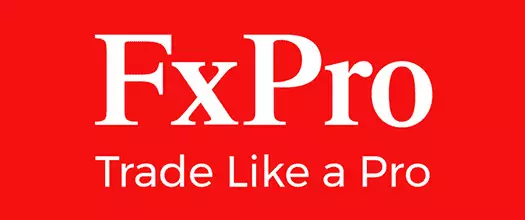High leverage in CFD trading allows UK traders to amplify their market exposure with minimal upfront capital. While this can magnify their potential profits, it also increases the risk of significant losses. For disciplined traders, high-leverage brokers offer opportunities to capitalise on short-term price movements across assets such as forex, shares, and indices. However, navigating this landscape requires a clear understanding of regulatory requirements, risk management, and broker reliability.
 CMC Markets
CMC Markets Pepperstone
Pepperstone IG
IG Plus500
Plus500 FxPro
FxPro Eightcap
EightcapBelow you can find more information about the best high leverage CFD trading platforms in the UK:
- CMC Markets, a broker regulated by the FCA, provides retail leverage capped at 1:30. However, professional traders benefit from significantly higher leverage ratios, extending to 1:500 for major indices and currency pairs. Leverage is adjusted for other asset classes as follows: 1:400 for treasuries, 1:200 for commodities, 1:33 for individual shares, 1:20 for share baskets, and 1:10 for ETFs.
- Pepperstone’s FCA-regulated division adheres to the established leverage limits for retail traders, offering a maximum of 1:30 for major currency pairs. Professional traders, upon qualification, can access substantially higher ratios.
- IG operates in strict adherence to FCA guidelines, applying a leverage limit of 1:30 for retail clients on major currency pairs and gold, and 1:20 on minor forex pairs. Qualifying professional traders have access to enhanced leverage ratios, reaching up to 1:222 and a minimum margin requirement of 0.45%.
- Plus500, also an FCA-authorised broker, offers a maximum forex leverage of 1:30 to retail traders. Professional accounts, however, can access leverage of up to 1:300 for major currency pairs and indices. The ratios can reach 1:150 for professional commodity traders. Other ratios include 1:100 for ETFs, 1:5 for options, and 1:20 for individual shares.
- FxPro facilitates retail leverage up to 1:30 for major currency pairs, in compliance with the rules set by the FCA. Clients meeting specific criteria are eligible to register or upgrade to professional accounts, which grant access to increased leverage ratios. It is important to note that professional traders may not be covered by the UK Financial Services Compensation Scheme.
- Eightcap aligns with FCA regulations, setting a 1:30 leverage ceiling for retail accounts. Clients requiring higher leverage must pursue professional account status. For these professional accounts, leverage increases to 1:200 for forex, gold, and popular indices, and 1:100 for non-major indices and commodities.
This publication covers:
- How leverage and margin work in CFD trading.
- Financial products available for leveraged trading in the UK.
- FCA’s leverage caps for retail and professional traders.
- Risks, benefits, and strategies to trade safely.
- How to choose a reputable high-leverage broker.
Leverage and Margin in CFD Trading
In the context of CFD trading, leverage and margin are two closely related concepts. Leverage refers to the ability to control a large position with a relatively small amount of capital, while margin refers to the amount of capital required to open and maintain a position.
When using leverage, UK traders are essentially borrowing money from their broker to increase their potential gains. However, this also increases the risk of losses, as the trader is responsible for repaying the borrowed amount plus any losses incurred.
Financial Products Available for Leveraged Trading in the UK
UK traders can use leverage to trade a variety of asset classes, including:
- Share CFDs: Speculate on stock price movements without owning the underlying shares.
- Forex CFDs: Trade currency pairs like EUR/USD and GBP/USD with high liquidity.
- Index CFDs: Gain exposure to popular indices like UK100, USTECH, US500, AUS200, FRA40, GER40, etc.
- Commodity CFDs: Trade gold, silver, oil, or natural gas.
For example, when trading share CFDs with leverage, a UK trader can control a large position in a particular stock with a relatively small amount of capital. Leverage is typically specified as a ratio, such as 1:10 or 1:20, which means that the trader can control a position worth 10 or 20 times the amount of capital they have deposited.
Brokers Compared by Number of Tradable CFD Leverage Products
Example of CFD Trading with Leverage
We will provide an example to illustrate how leverage can amplify both gains and losses when trading CFDs.
A trader uses 1:5 leverage to buy £1,000 worth of UK100 CFDs with a £200 margin.
Scenario 1 (Profit):
The UK100 rises by 2%.
- Profit: £1,000 × 2% = £20
- Return on margin: £20 profit on a £200 margin = 10% gain
Scenario 2 (Loss):
The UK100 falls by 2%.
- Loss: £1,000 × 2% = £20
- Return on margin: £20 loss on a £200 margin = 10% loss
Even small price movements in the underlying asset can have a significant impact on your capital due to leverage.
Leverage Limits in the UK
Under FCA’s regulations, which largely align with ESMA guidelines, leverage limits for UK traders vary significantly between retail and professional clients. Retail traders are subject to strict caps to protect them against excessive risk, while professionals can access higher leverage, up to 1:500 for certain assets like forex majors.
| Asset | Retail Leverage Cap |
| Forex Majors | 1:30 |
| Forex Minors and Gold | 1:20 |
| Index CFDs (1:10 for non-major indices) | 1:20 |
| Commodity CFDs | 1:10 |
| Share CFDs | 1:5 |
Broker Requirements for Professional Trader Classification
To qualify as a professional trader and access higher leverage (e.g., 1:500), brokers typically require clients to meet at least two of the following criteria:
- Trading Experience: Execute at least 10 significant trades per quarter over the past year.
- Portfolio Size: Hold a financial instrument portfolio exceeding £500,000, including cash and assets.
- Professional Expertise: Experience in the financial sector for at least one year in a role requiring knowledge of leveraged trading.
Brokers may also assess a client’s understanding of the risk and markets through questionnaires. Once classified as professionals, traders gain access to higher leverage but forfeit certain retail protections, such as negative balance protection and eligibility for investor compensation schemes.
Offshore Trading and Brokers Offering High Leverage
While the FCA has imposed leverage limits on CFD trading for retail traders in the UK, some offshore brokers may offer higher leverage. These brokers are often based in jurisdictions with less stringent regulatory requirements, such as Belize.
The main risks associated with offshore brokers offering higher leverage beyond FCA caps (e.g., 1:1000 on forex) are as follows:
- No FCA Protection: Offshore brokers may lack negative balance protection or segregated accounts.
- Unethical Practices: Hidden fees, slippage, or refusal to process withdrawals.
- Tax Complications: Profits from unregulated brokers may face scrutiny from tax authorities.
Safer Alternatives:
- EU brokers offering professional accounts with higher leverage.
- Brokers regulated in jurisdictions like Cyprus (CySEC) or Malta (MFSA).
The Benefits and Risks of Trading CFDs with High Leverage in the UK
We have summarised the main benefits and risks associated with trading CFDs with high leverage in the table below:
| Benefits | Risks |
| Amplified Profit Potential: Leverage allows traders to maximise returns on small price movements, making it ideal for short-term strategies like scalping or day trading. | Amplified Losses: Just as profits are magnified, so are losses. A small adverse price movement can result in significant losses, potentially exceeding your initial investment. |
| Flexibility in Trading: Traders can take long (buy) and short (sell) positions, profiting from both rising and falling markets. | Margin Calls: If your account equity falls below the required margin level, your broker may close your positions to prevent further losses, often at unfavourable prices. |
| 24/5 Market Access: Many leveraged products, such as forex and indices, are available for trading around the clock, allowing traders to react to global market events in real-time. | No Ownership Rights: CFDs are derivative instruments, meaning you do not own the underlying asset. This excludes you from benefits like dividends or voting rights. |
| Diversification Opportunities: Leverage enables traders to diversify across multiple asset classes (e.g., forex, commodities, indices) without requiring large amounts of capital. | Additional Costs: Swap rates (overnight financing fees) and commissions can erode profits, especially for long-term positions. |
| Access to Global Markets: High-leverage CFDs provide exposure to international markets, including those that may otherwise be inaccessible due to high entry costs. | Psychological Pressure: The high stakes of leveraged trading can lead to emotional decision-making, such as overtrading or holding losing positions for too long. |
UK traders, particularly those using high-leverage CFDs, must weigh these benefits against the risks. While leverage can enhance profitability, it requires disciplined risk management to avoid catastrophic losses. Tools like stop-loss orders, risk-reward ratios, and portfolio diversification are essential to mitigate risk and ensure sustainable trading practices.
How to Mitigate High-Leverage Risks?
In this section, we will provide further information on how UK traders can mitigate the risks associated with trading with high leverage.
- Use Stop-Loss Orders
- What is a Stop-Loss? A stop-loss order automatically closes your position at a predetermined price level to limit losses.
- Why It Helps: It prevents emotional decision-making and ensures you exit a losing trade before it wipes out your account.
- Action: Always set a stop-loss when entering a trade, and adjust it as the market moves in your favour.
- Choose Brokers with Negative Balance Protection
- What is Negative Balance Protection? A regulatory safeguard that ensures your account balance cannot fall below zero, even in highly volatile markets.
- Why is It Important? It protects you from owing money to the broker if a trade goes severely against you.
- Action: Select brokers regulated by authorities like the FCA or CySEC, for example, as they mandate negative balance protection for retail clients.
- Limit Leverage Ratios
- Regulatory Limits: In the UK, retail traders are limited to 1:30 leverage for major currency pairs.
- Personal Limits: Even if your broker offers higher leverage, consider using lower ratios (e.g., 1:10 or 1:20) to reduce risk.
- Action: Choose a leverage level that aligns with your risk tolerance and trading strategy.
- Diversify Your Portfolio
- What is Diversification?: You spread your investments across different asset classes (e.g., forex, indices, commodities) to reduce exposure to any single market.
- Why It Helps: If one trade performs poorly, gains in other positions can offset the losses.
- Action: Avoid putting all your capital into a single trade or asset.
- Manage Position Sizing
- What is Position Sizing? Determine the amount of capital to risk on each trade based on your account size and risk tolerance.
- Rule of Thumb: Risk no more than 1-2% of your account balance on a single trade.
- Action: Use a position size calculator to ensure you are not overexposed.
- Monitor Margin Levels
- What is Margin? The amount of capital required to open and maintain a leveraged position.
- Margin Call Risk: If your account equity falls below the required margin, your broker may close your positions.
- Action: Keep your margin level above 100% and avoid overleveraging.
- Avoid Overtrading
- What is Overtrading?: Opening too many positions or trading excessively, often due to emotional decisions.
- Why is It Risky? Overtrading increases risk exposure and can lead to significant losses.
- Action: Stick to your trading plan and avoid impulsive trades.
- Use Risk-Reward Ratios
- What is Risk-Reward? The ratio of potential profit to potential loss on a trade. A 1:2 ratio means you aim to make £2 for every £1 risked.
- Why It Helps? Ensures that your potential rewards justify the risks.
- Action: Aim for a minimum risk-reward ratio of 1:2 in your trades.
- Stay Informed About Market Conditions
- Why It Matters? High volatility (e.g., during news events) can lead to rapid price movements, increasing leverage risks.
- How to Stay Informed? Use an economic calendar to track major events like interest rate decisions or GDP reports.
- Action: Avoid trading during high-impact news events or reduce leverage during such periods.
- Practise with a Demo Account
- What is a Demo Account? A risk-free environment to practise trading with virtual funds.
- Why It Helps? Allows you to test strategies and understand leverage without risking real money.
- Action: Spend time on a demo account to build confidence and refine your approach.
Example of Risk Mitigation in Action
Imagine you have a £10,000 account and want to trade GBP/USD with 1:30 leverage:
- Position Size: Risk 1% of your account balance (£100) on the trade.
- Stop-Loss: Set a 20-pip stop-loss, limiting potential loss to £100.
- Leverage: Use 1:10 instead of 1:30 to reduce risk.
- Diversification: Combine GBP/USD with a gold CFD position to spread risk across instruments.
How to Pick a Good Broker Offering High Leverage?
When choosing a broker offering high leverage, UK traders should consider several factors, with some of the most important ones being:
- Regulatory compliance
- Reputation and trustworthiness
- Trading platforms and tools
- Customer support
- Fees and commissions
FAQs
What is the maximum leverage available for retail traders in the UK?
The maximum leverage available for retail traders in the UK varies depending on the financial product being traded. For example, the maximum leverage for forex CFDs is 1:30, while the maximum leverage for share CFDs is 1:5.
What is considered “high leverage” for CFD trading in the UK?
Under current FCA regulations for retail clients:
- Major currency pairs (e.g., EUR/USD, GBP/USD): Maximum leverage is 1:30.
- Minor currency pairs, gold, and major stock indices: Maximum leverage is 1:20.
- Other commodities and minor stock indices: Maximum leverage is 1:10.
- Individual equities: Maximum leverage is 1:5.
- Cryptocurrencies (retail ban): Under FCA regulations, retail traders are prohibited from trading cryptocurrency CFDs.
Any broker offering significantly higher leverage to UK retail clients is likely operating outside of FCA regulations.
Can I trade CFDs with higher leverage offshore?
Yes, some offshore brokers offer higher leverage to UK traders. However, trading with offshore brokers can be risky, and UK traders should be extra cautious.
How can I mitigate the risks of trading CFDs with high leverage?
UK traders can mitigate the risks of trading CFDs with high leverage by using risk management strategies such as stop-loss orders and position sizing. They should also carefully consider their investment goals and risk tolerance before trading with high leverage.
What are the potential consequences of not meeting a margin call when trading CFDs with high leverage?
If a UK trader fails to respond to a margin call, their broker may close out their position, resulting in significant losses. In some cases, the trader may also be liable for the additional losses incurred by the broker. It is essential for UK traders to carefully manage their risk and ensure they have sufficient funds to maintain their margin.